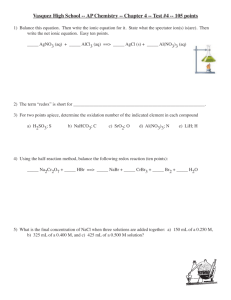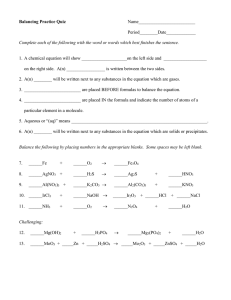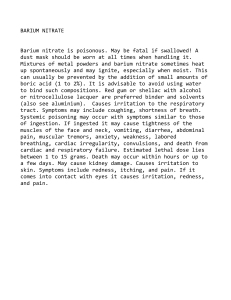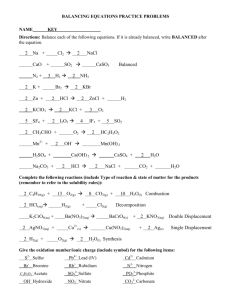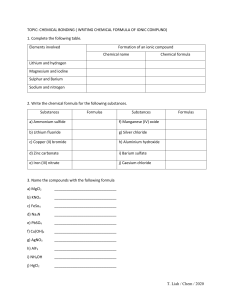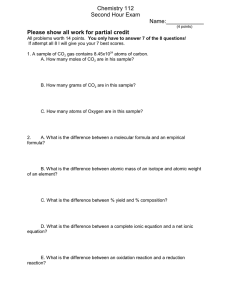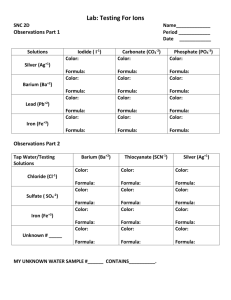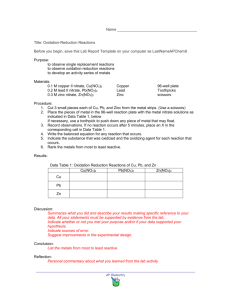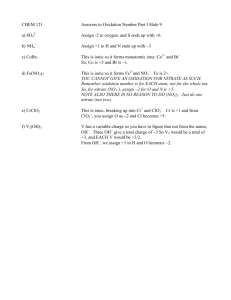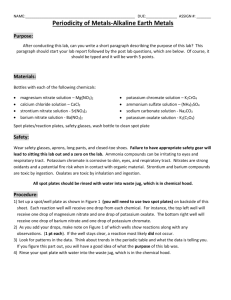CP Chemistry * Stoichiometry Problems
advertisement
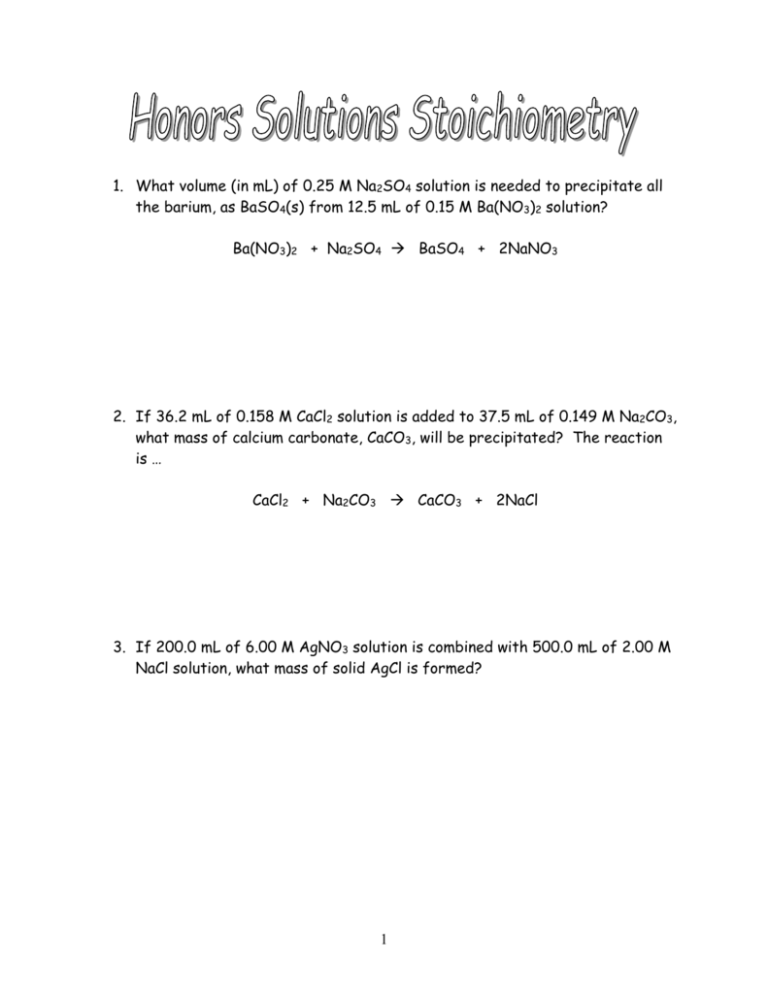
1. What volume (in mL) of 0.25 M Na2SO4 solution is needed to precipitate all the barium, as BaSO4(s) from 12.5 mL of 0.15 M Ba(NO3)2 solution? Ba(NO3)2 + Na2SO4 BaSO4 + 2NaNO3 2. If 36.2 mL of 0.158 M CaCl2 solution is added to 37.5 mL of 0.149 M Na2CO3, what mass of calcium carbonate, CaCO3, will be precipitated? The reaction is … CaCl2 + Na2CO3 CaCO3 + 2NaCl 3. If 200.0 mL of 6.00 M AgNO3 solution is combined with 500.0 mL of 2.00 M NaCl solution, what mass of solid AgCl is formed? 1 4. What mass (in grams) of solid sodium sulfate would need to be added to 12.5 mL of 0.150 M barium nitrate solution to precipitate all of the barium as the compound barium sulfate. 5. When a solution of lead (II) nitrate reacts with a potassium chromate solution a solid product, lead (II) chromate, forms according to the equation below. If 2.54 g of PbCrO4 forms from the mixing of 39.3 mL of 0.200 M K2CrO4 and 96.5 mL of the lead (II) nitrate solution, calculate the molarity of the lead (II) nitrate solution (assume both reactants will run-out simultaneously). Pb(NO3)2 + K2CrO4 PbCrO4 + KNO3 6. A) How many grams of Ba(NO3)2 are required to precipitate all the sulfate ion present in 15.3 mL of 0.139 M sulfuric acid solution? B) Calculate the number of moles of all the remaining ions left in solution. C) Calculate the concentration in M of all the remaing ions left in solution. 2
